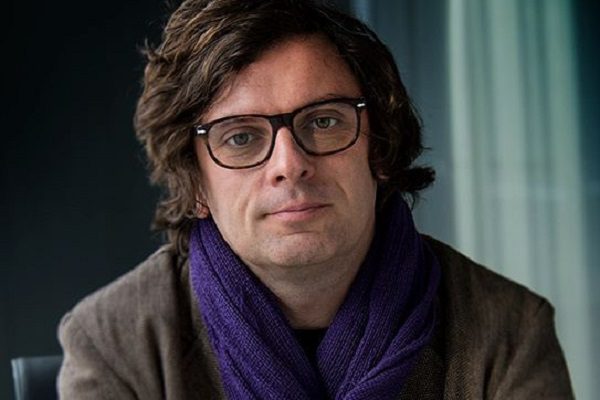Art Professor Marek Ranis to Join Geology/Engineering Team in NSF-funded Research

Associate Professor of Art Marek Ranis will serve as an artist-in-residence in a research project funded by a grant from the National Science Foundation (NSF). The project, “Quantifying climate-dependent subcritical cracking and mechanical weathering over geologic time,” will be led by Professor Missy Eppes in the Department of Geography and Earth Sciences, with Professor Russ Keanini in the Department of Mechanical Engineering and Engineering Science. Its aim, as described in the grant application, is to gain an “understanding of whether and how climate influences mechanical breakdown rates of surface rocks” by “systematically testing the contribution of subcritical cracking to rock weathering over geologic timescales.”
Knowing that the communication of complex scientific research is often challenging, Eppes and co-principal investigator Ken Lambla, former dean of the College of Arts + Architecture and professor of architecture, developed the artist residency as an integral part of the NSF grant application, highlighting art’s ability to convey abstract concepts through unique “conceptualization, visualization, and interpretative strategies.”
Lambla issued a request for proposals from UNC Charlotte artists to work alongside Eppes in the field to develop depictions of the research, to be presented in public showings and to be employed in scientific publications. Ranis was chosen for his proposal, Subcritical, a multidimensional approach that will include a semi-documentary film, a photography series (10 large digital prints on aluminum), and sculptural objects inspired by the rock fragments under scientific investigation.
“Conceptually, I envision my project as an expedition, documented through film and photography,” Ranis wrote in his proposal, “a scientific and artistic expedition to test and prove hypotheses, but also create a connection between a focused scientific enquiry and our, lay people’s, ability to relate to them in a larger context of dramatic environmental changes. From drone photography and filming to microscope photography, I will aim to explore the phenomenon of climate related rock erosion, from different viewpoints, slowly zooming in on the actual subjects of the scientific inquiry and the research as the story unfolds.”
The artist residency will focus on field work in two sites – California (Sierras / Mono Lake /Owens Valley region) and Israel (Negev Desert). Ranis will join the field work in the spring and summer of 2020.
Cross-disciplinary investigations linking science and the arts are not new to Ranis, who over the past two decades has developed a large body of work related to issues of climate change. Neither are they foreign to the College of Arts + Architecture, which organized KEEPING WATCH, a four-year series of engagements and exhibitions focused on local environmental issues. But for the NSF grant reviewers, the use of artistic methods to interpret and communicate scientific research presented an original and intriguing approach: “ I am especially impressed with the incorporation of an artist in residence that will relay the process of this science and its results to the public,” wrote one reviewer. “It is novel and presents a fresh approach to educating the public about the process of science and value of its results.”
Ranis expects to complete Subcritical in late 2021 or early 2022.